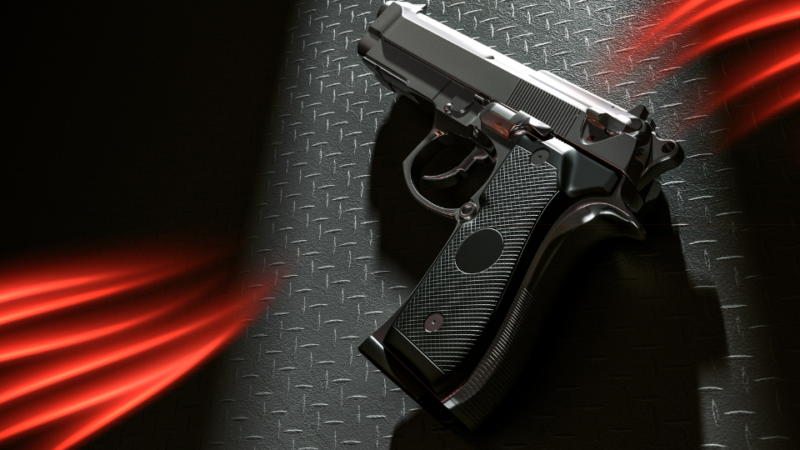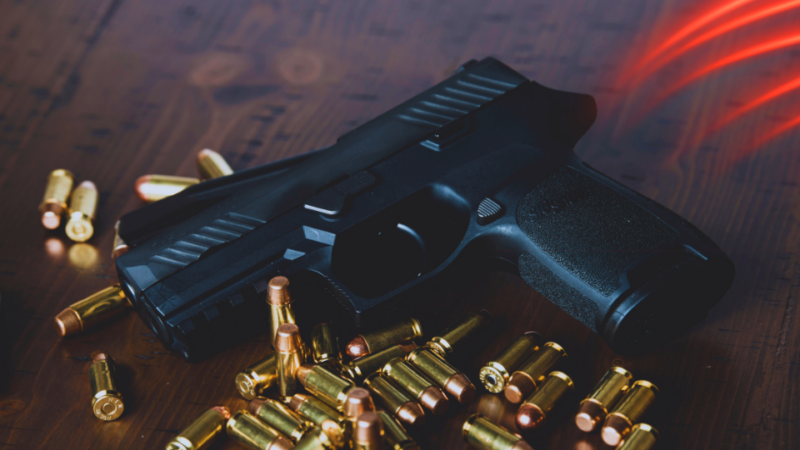If you’ve ever been to a gun range, you’ve probably noticed something: most people handle their firearms carefully.
They follow the rules, keep their fingers off the trigger, and point their guns in a safe direction.
But then, there are those moments—when someone forgets a basic safety rule, gets distracted, or makes a split-second mistake that could’ve ended very badly.
I’ve seen it happen more times than I’d like to admit.
Maybe it’s the guy turning to talk to his friend with a loaded gun in hand, completely unaware of where it’s pointing. Or the beginner who’s nervous and accidentally presses the trigger when they shouldn’t.
These are the moments that make my heart race.
So, does that mean accidents at gun ranges are more common than people think? Well… yes and no.
Actual injuries might not happen as often as people assume, but the near misses?
Way too frequent. And that’s exactly what I want to talk about today—the mistakes, the risks, and the reality of gun range accidents.
How Often Do Accidents Happen?
A quick online search will tell you that compared to other gun-related incidents, accidents at shooting ranges aren’t leading the statistics.
But that doesn’t mean they don’t happen.
Reports show that injuries do occur—self-inflicted wounds, accidental discharges, ricochets hitting unintended targets.
These incidents might not be everyday occurrences, but if you visit a range regularly, you’ll eventually witness something that makes you uneasy.
And just because an accident doesn’t happen often doesn’t mean it’s not a big deal when it does.
Think of it like this—how often do car crashes happen in your town? Probably not every day, but that doesn’t mean you stop wearing a seatbelt. The same logic applies to gun safety.
Common Mistakes That Lead to Accidents
Most gun range accidents don’t happen because of some freak event. They happen because someone, somewhere, got careless.
Here are the biggest culprits:
1. Finger on the Trigger at the Wrong Time
This is the number one mistake, especially for new shooters.
The moment someone picks up a gun, their instinct might be to rest their finger on the trigger.
Huge mistake. The trigger should only be touched when you’re lined up, ready to fire.
2. Bad Muzzle Awareness
A gun should always point downrange—no exceptions.
That’s a disaster waiting to happen.
3. Neglecting Malfunctions
Not every shot goes off as planned. Sometimes, you get a misfire, a squib round, or a jam.
When that happens, some people panic—or worse, keep pulling the trigger. Every shooter should know how to handle malfunctions safely before they ever step onto a range.
4. Ricochets and Unintended Targets
Not every bullet stops where you want it to.
Steel targets, hard surfaces, or even an unnoticed object downrange can send a bullet bouncing in an unexpected direction. The danger isn’t just in front of you—it’s all around.
5. Lack of Focus
Shooting a gun requires full attention.
Yet, distractions happen—conversations, overconfidence, even someone pulling out their phone mid-session. All it takes is one moment of inattention for something to go wrong.
6. Ignoring Range Safety Officers
Most gun ranges have a Range Safety Officer (RSO) watching over everything. Their job is to make sure everyone is following the rules. But some people ignore them, assume they “know better,” or get defensive when corrected. That’s a problem.
Why Some People Ignore Safety Rules
If safety is common sense, why do some people take risks at the range?
A few reasons:
The Silent Threat: Near Misses

Here’s something most people don’t think about: not all mistakes lead to injuries. Some are almost accidents—but that doesn’t make them any less dangerous.
Maybe a bullet hit the ceiling instead of the target. Possibly, someone absentmindedly pointed their gun toward others before realizing what they were doing.
The lucky ones walk away without a scratch. But luck runs out eventually.
Having a first aid kit on hand is just as crucial as wearing hearing protection or safety glasses.
Companies like YEYETAC specialize in tactical medical gear, ensuring that if an accident does occur, the right supplies are available to manage the situation immediately.
Essential Gun Range Safety Rules (That Should Be Non-Negotiable)

No matter how long you’ve been shooting, safety rules apply every single time.
1. Treat Every Firearm Like It’s Loaded
Even if you just checked the chamber, act like the gun is still live. That mindset saves lives.
2. Keep Your Finger Off the Trigger Until You’re Ready to Fire
Not when you pick it up. Not while adjusting your stance. Only when you’re aiming and ready.
3. Never Point a Gun at Anything You Don’t Intend to Destroy
The muzzle should never, ever face another person.
4. Be Aware of Your Target and What’s Beyond It
Bullets don’t just stop on command. If you don’t know what’s behind your target, you shouldn’t be pulling the trigger.
5. Respect Range Commands
If an RSO gives an instruction, follow it. No arguments, no exceptions.
6. Focus—Always
No texting, no casual conversations, no distractions while handling a firearm.
Final Thoughts

So, are accidents at gun ranges more common than people think? Yes—and no.
Next time you’re at the range, don’t just assume everything will be fine. Make sure it is. Because safety isn’t just about preventing accidents—it’s about preventing the opportunity for one to ever happen.







